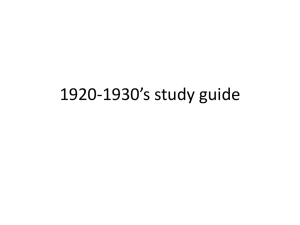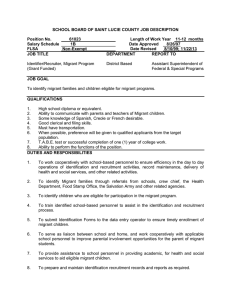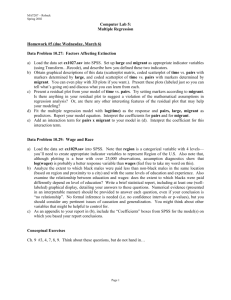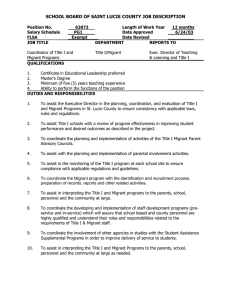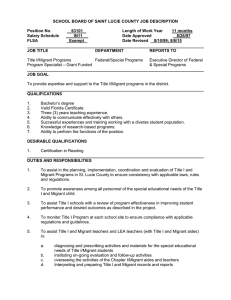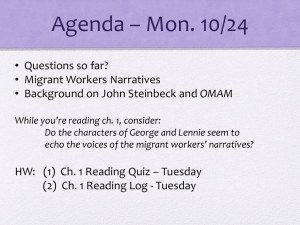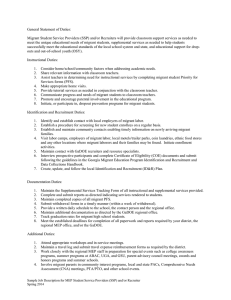Migrant Workers
advertisement
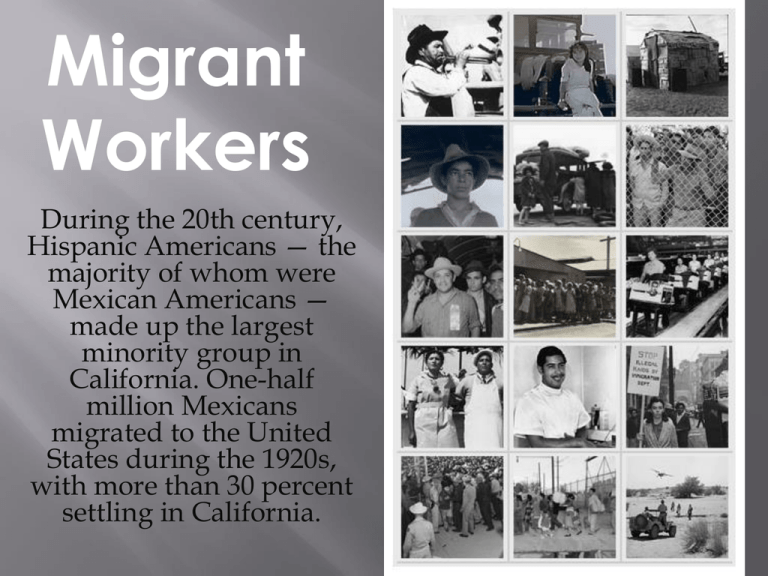
Migrant Workers During the 20th century, Hispanic Americans — the majority of whom were Mexican Americans — made up the largest minority group in California. One-half million Mexicans migrated to the United States during the 1920s, with more than 30 percent settling in California. Employers viewed Mexican workers as desirable because they did not demand higher wages, and they were seen by managers as being satisfied with the conditions they worked under – even when the conditions were very undesirable. Most families needed for their children to work as well. Migrant workers were rarely paid enough to afford comfortable housing - even with all capable members of their families working long hours. Every harvest season, an estimated 300,000 children between the ages of 6 and 14 migrate with their parents who have been hired to work in the fields. At about age 10, half of those children begin working, and the number rises sharply as the children get older, depriving them of education and often endangering their health and safety. Many of the photographs that you will see show Mexican migrant workers in California agriculture. Families faced rough working conditions in the fields and even worse living conditions. This 10-year old boy has been working as a seasonal migrant farm worker since he was 7. Family of migrant workers, 1940s Migrant workers in California, 1935 Children of Mexican migrant workers posing at the entrance to El Rio FSA Camp, El Rio, California, 1941 Child for hire, Texas Family Working in the Fields Picking Cotton Tucson, Arizona Take notice of the “homes” in the background. Living Conditions VOICES from the FIELDS “This book gives a voice to the children of migrant farm workers, [one of] our country’s most exploited and deprived group[s] of people . . . The poems and interviews in this book relate life as it is experienced by these migrant children.” -Francisco Jimenez (excerpt from Foreword)
